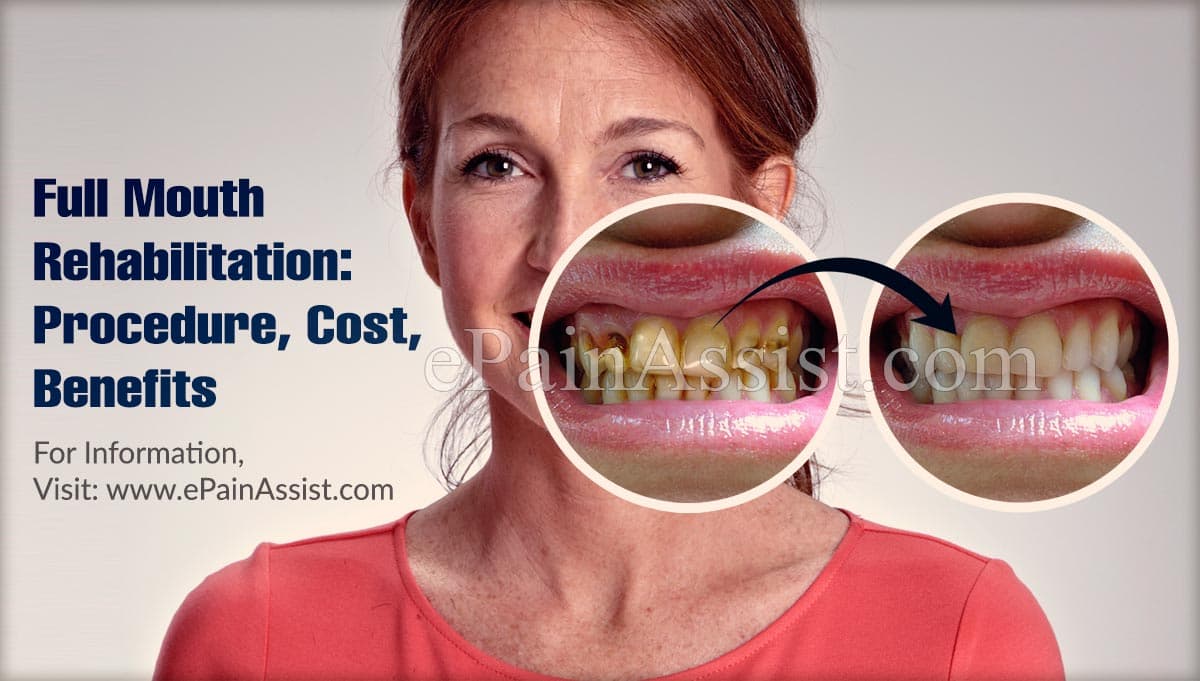What is Full Mouth Rehabilitation?
Full mouth rehabilitation is a reconstruction plan to optimize the health of the entire mouth including the teeth, gums, and the bite. Full mouth rehabilitation refers to replacing or rebuilding the teeth in the patient’s mouth. It improves the health, function, and the beauty of the mouth.

There are various dental clinics which are known for successfully performing the full mouth rehabilitation procedure.
The full mouth rehabilitation generally involves:
- The dentist who perform procedures like crowns, bridges, and veneers
- Periodontists, who are specialized in the gum treatments
- Oral surgeons
- Orthodontists who specialize in tooth movement and positions
- Endodontist specializing in the tooth pulp
- Full mouth dental rehabilitation may include the following services:
- Dental bridges
- Dental crown
- Dental implants
- Inlays or onlays
- Porcelain veneers
- Professional grade teeth whitening
- Traditional metal filling
The Procedure of Full Mouth Rehabilitation
If a person thinks he needs rehabilitation he should visit a dentist for a comprehensive analysis. The dentist would examine the mouth to determine the extent of the problem and the options of the treatment to correct it.
The mouth is examined as follows:
Teeth: The condition of the teeth determines the type of rehabilitation procedure needed. Also, the note of cavities, tooth wear, cracks, short and long teeth, root canal issues and tooth movements are made by the dentist.
Periodontal Tissues: Unhealthy gums might need scaling and root planning to treat the periodontal disease. Intensive treatment is required to treat the gums to ensure the newly constructed teeth have a solid foundation. The treatment could involve soft tissue or bone grafts to build gums and underlying jaw bones.
The dentist also looks for deep pockets, excessive and insufficient gum tissue and bony irregularities if present.
Temporomandibular Joints, Jaw Muscles, And Occlusion: A person should have a stable bite in which there is no pain when you close your mouth or chew or the one in which there is no wear or destruction of the teeth. It is very important for overall health. If any problem exists, it should be taken into consideration.
You might require orthodontics to correct occlusion before rehabilitation procedures are performed.
Aesthetics: The color, shape, size and the proportion of teeth and how they appear in relation to the gums, mouth, lips, and the face is also important for full mouth rehabilitation.
The examination of the mouth involves X-rays, impressions of upper and lower teeth, models of the teeth by taking impressions and also models of the bite. The doctor may also send the patient to the specialist to go ahead with the best treatment plan suited.
After obtaining all the relevant information in a patient’s case the doctor plans the treatment to correct all the problems in the mouth and for full mouth rehabilitation.
Who Requires Full Mouth Rehabilitation?
The patients who require full mouth rehabilitation are the ones with numerous dental problems such as multiple missing teeth, cracked or broken teeth, badly worn teeth or other habits.
Also, there are a certain group of patients born with conditions such as Ectodermal Dysplasia, Amelogenesis, or Dentinogenesis Imperfect, who actually need extensive restoration of their teeth.
Different Procedures Involved In Full Mouth Rehabilitation
The procedures are determined by the dentist and the specialist working on full mouth rehabilitation. The procedure of full mouth rehabilitation requires multiple clinic visits as it is done in many phases. Depending on the individuals need the following procedures are performed.
- Periodontal care and prophylactic teeth cleaning
- Crown lengthening for exposing the healthy tooth
- Orthognathic surgery for repositioning the jaw
- Contouring the gum tissue to maintain the balance and harmony in the smile
- Reduction of the natural tooth structure so that crowns, bridges, and veneers can be placed.
- Braces to move teeth into an optimal position
- Implant placement and restoration to replace the missing teeth and bridge restoration
- To enhance the stability of teeth bone or soft tissue grafting is done.
How Long Does Full Mouth Rehabilitation Procedure Take and How Much Does It Cost?
The time needed to complete the procedure depends on the extent of dental problems faced by the patient. Mostly in the first sitting, the dentist checks the condition and analyzes the problem. He then determines the procedures and the time required to complete them.
The cost of the procedure also depends on the extent of the dental problems and the procedures recommended. But surely the cost of the whole procedure is justified once you see a full, healthy and a beautiful smile.
Benefits of Full Mouth Rehabilitation
Full mouth rehabilitation provides various treatments for the correction of various concerns of the mouth. The advantages are as follows:
- Replacement of the missing tooth
- Aligning the teeth and correcting the gaps and spaces
- Correcting the chipped and cracked teeth
- Treatment of periodontal disease
- Correction of teeth damaged due to cavities and decay
- Correcting the worn down appearance of the teeth
- Improvement in the conditions associated with the TMJ disorder
A whole team of professionals is required in it to successfully complete the task successfully. Any cause or concerns are also handled well by the specialists. Full mouth rehabilitation not only improves the smile or makes it healthy but also restores overall health.
